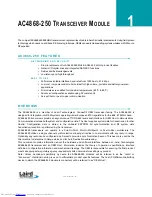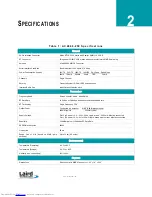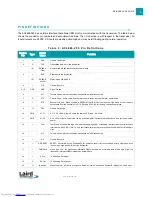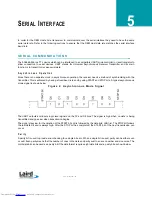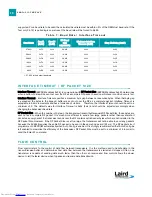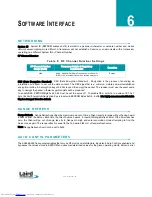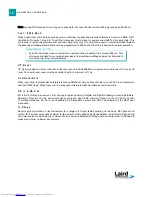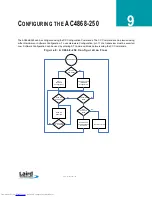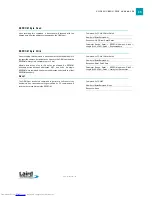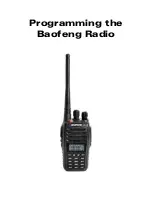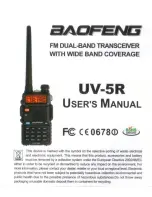
1 1
S E R I A L I N T E R F A C E
www.lairdtech.com
H A L F D U P L E X / F U L L D U P L E X
When Half Duplex communication is chosen, the AC4868-250 will send a packet out over the RF whenever it can. This
can cause packets sent by multiple transceivers at the same time to collide with each other over the RF. To prevent
this, Full Duplex communication can be chosen. Full Duplex shares the bandwidth intelligently to enable two-way
collision-free communication without any collision. This is done by calculating the amount of time until the next hop to
ensure that it has time to send the packet; if there is enough time, it will send the packet and if not, it will wait until its
next appropriate hop. The Server transmits during the even hops while the Client(s) will transmit during the odd hops.
Although there is technically only one frequency bin, the Server still maintains a bin count for the purpose of handling
Full Duplex mode. While the RF hardware is still technically half duplex, the bandwidth sharing it makes the
transceiver seem full duplex. Enabling Full Duplex can cause overall throughputs to be cut in half.
S Y S T E M T I M I N G & L A T E N C Y
Care should be taken when selecting transceiver architecture, as it can have serious effects on data rates, latency,
and overall system throughput. The importance of these three characteristics will vary from system to system and
E N G I N E E R ’ S T I P
Can I implement a design using just Txd, Rxd and Gnd (Three-wire Interface)?
Yes. However, it is strongly recommended that your hardware monitor the CTS pin of the radio.
CTS is taken High by the radio when its interface buffer is getting full. Your hardware should
stop sending at this point to avoid a buffer overrun (and subsequent loss of data).
You can perform a successful design without monitoring CTS. However, you need to take into
account the amount of latency the radio adds to the system, any additional latency caused by
Transmit Retries or Broadcast Attempts, how often you send data, non-delivery network
timeouts and interface data rate. Polled type networks, where the Server host requests data
from the Client host and the Client host responds, are good candidates for avoiding the use of
CTS. This is because no one transceiver can monopolize the RF link. Asynchronous type
networks, where any radio can send to another radio at any point in time, are much more
difficult to implement without the use of CTS.
electronic components distributor





